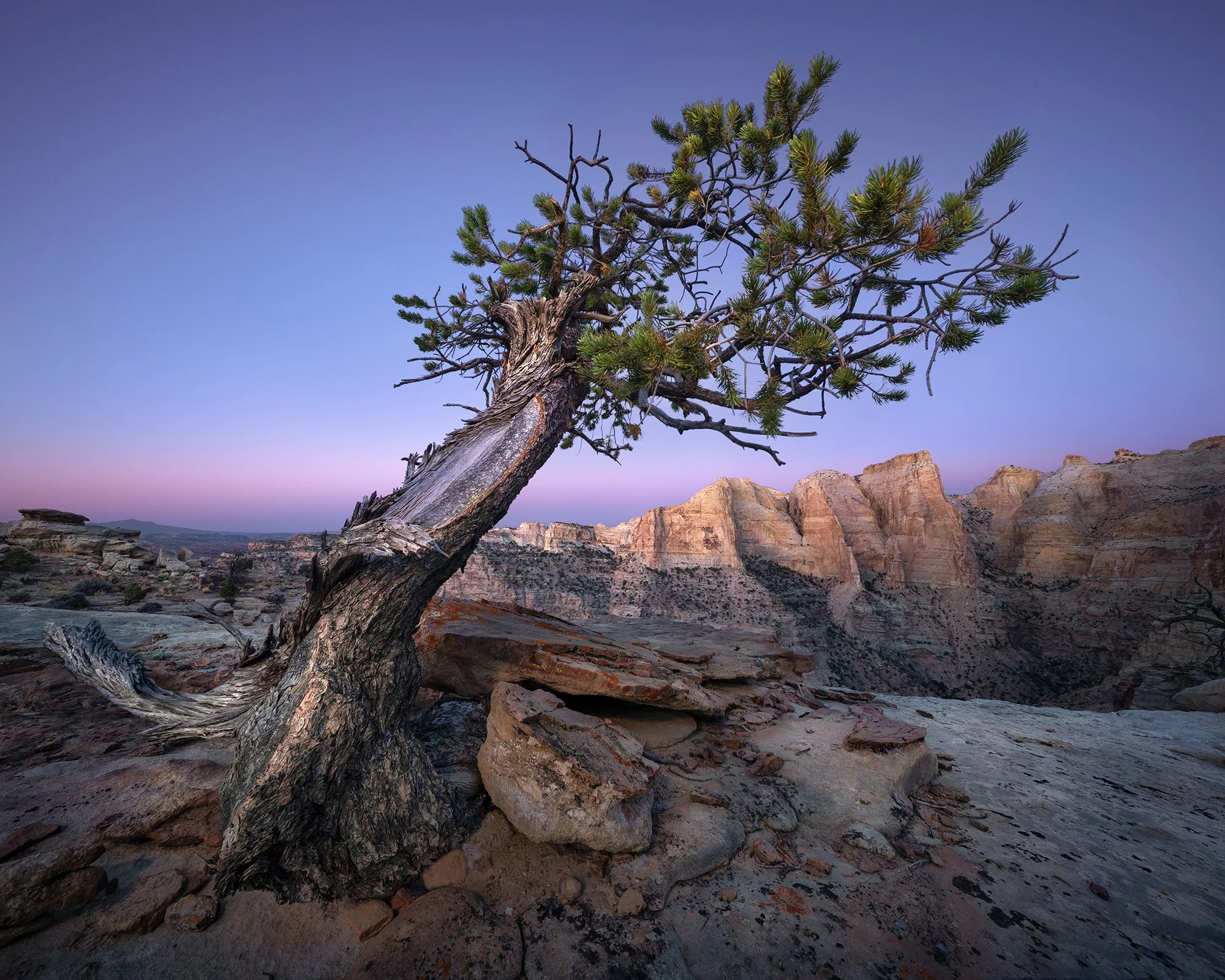Pro Photo Tips by Wayne Suggs
Photographing Beyond the Iconic
By Wayne Suggs
There’s more to capture in the Four Corners area beyond the iconic quaking aspen trees of the San Juan Mountains. From the ancient junipers of the high desert—weathered and wise—to the cottonwoods that trace the lifeblood of canyons and riparian corridors, to the towering old-growth ponderosa pines. Twisted, gnarled, both living and long gone, these arboreal elders, often overlooked, invite us to explore the quiet places where these ancient trees have both lived and died.
I used visual weight intentionally to compose this scene, ensuring the tree became the focal point. I avoided placing any substantial elements around it, allowing the tree to stand out in isolation. For example, I positioned myself low enough, so the dark sky served as a clean backdrop, enhancing the tree’s stature as the main subject. Had I framed it higher, the tree would have intersected with the distant virga, diminishing its impact. I also paid close attention to keeping the edges of the frame clean, which not only isolates the tree but also encourages the viewer’s eye to explore the rest of the image for subtle, interesting details
I discovered this tree the day before capturing the shot, already envisioning how the first light of morning would reveal the ethereal Earth’s shadow, also known as the Belt of Venus. With a wide-angle lens, focus stacking, and patience for that perfect light, I was able to frame this piñon pine as a commanding presence over the high desert landscape.
At dawn, I used cottonwood trees to frame this 800-year-old Pre-Puebloan dwelling. This created a window, offering a fresh perspective on a subject that is often photographed in isolation. By incorporating the surrounding landscape, I wanted to highlight the beauty of the environment these early people once called home, adding depth and context to the story the photograph tells.
Discovering a solitary old-growth ponderosa pine beneath a winter meteor shower, setting the intervalometer, and letting time and chance work their magic, hoping to capture that one perfect meteor streaking across the starry mountain sky.
Trees often seem to carry their own spirit, and even in death, they have such a story to tell. By lowering the camera nearly to the ground, the towering presence of this solitary ponderosa pine is magnified, its height making it all the more dramatic.
Understanding visual weight is essential, and seasonal changes play a significant role in shaping this photograph. Had the image been captured in early summer, the sun would have appeared too centrally in the frame, making the right side visually heavier. In contrast, a winter shot would have placed the sun off-frame to the left, disrupting the balance. By capturing the sun in its current position, it effectively counterbalances the tree, creating a harmonious distribution of visual weight and a pleasing flow throughout the scene.







